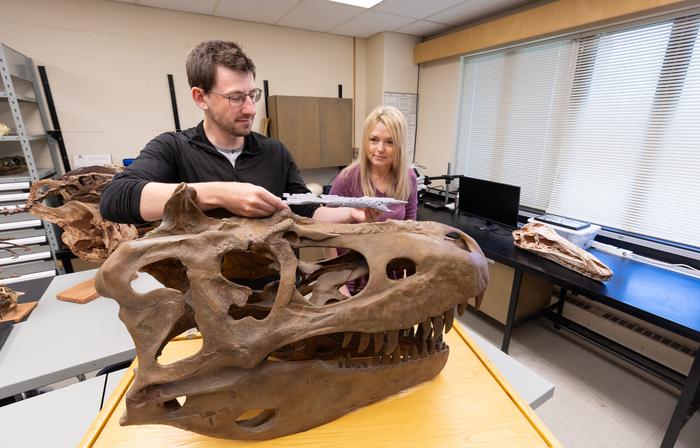'Khankhuuluu', the 'prince of dragons' who is the closest known ancestor of tyrannosaurs

Paleontologists have identified a new species of dinosaur, Khankhuuluu , which is described as the closest known ancestor of giant tyrannosaurs .
The findings of an international team of researchers—led by Jared Voris and Dr. Darla Zelenitsky of the University of Calgary's Faculty of Science—were published this week in the journal Nature .
Voris, first author and a PhD candidate in the Department of Earth, Energy and Environment, says the new tyrannosaur species lived 86 million years ago and was a mid-sized, swift-footed predator that evolved after other large predatory dinosaurs became extinct .
According to researchers, Khankhuuluu was the closest ancestor to the famous tyrannosaurs of Jurassic Park.
"This new species offers us a window into the ascending phase of tyrannosaur evolution, just as they transition from small predators to their apex predator form," Voris says.
Khankhuuluu translates from Mongolian as 'prince of dragons' or 'the dragon prince'. The name denotes its place in the tyrannosaur lineage, as Khankhuuluu was the prince before species like Tyrannosaurus rex, the Tyrant Lizard King.
As the closest known ancestor, Khankhuuluu shares many characteristics with its tyrannosaur descendants, though it lacked some of the more defining traits tyrannosaurs had. The new species weighed 750 kilograms (about the size of a horse), making it two to three times smaller than its enormous descendants .

Darla Zelenitsky, associate professor in the Faculty of Science, and Jared Voris, doctoral candidate. Photo: Riley Brandt/University of Calgary
Khankhuuluu had tiny, rudimentary horns that would evolve to become more prominent in species like Albertosaurus and Gorgosaurus , used for mating display or intimidation. It had a long, shallow skull that shows that Khankhuuluu lacked the bone-crunching ability of T. rex. The new species can be defined as a mesopredator, similar to coyotes, meaning it used speed and agility to bring down its prey .
The fossils, found in the Bayanshiree Formation in southeastern Mongolia , had been studied in the 1970s by paleontologist Altangerel Perle. Perle compared the fossils to another medium-sized tyrannosaur called Alectrosaurus from China. Voris traveled to Mongolia in 2023 to study the fossils at the Institute of Paleontology, and soon realized that there were features that set them apart from Alectrosaurus .
The evolution of tyrannosaurs " Khankhuuluu , or a closely related species, may have migrated to North America from Asia around 85 million years ago," said Zelenitsky, a paleontologist and associate professor in the Department of Earth, Energy and Environment. "Our study provides strong evidence that large tyrannosaurs first evolved in North America as a result of this migration."
The results of the study show that the back-and-forth movement of tyrannosaurs between Asia and North America was less frequent and sporadic than previously known . Khankhuuluu is the last known ancestor of tyrannosaurs found in the Asian fossil record.
The research reveals that the new species, or one of its congeners, crossed a land bridge into North America, where it evolved into the famous predator Tyrannosaurs . Fossil records indicate that tyrannosaurs were exclusive to North America for several million years before migrating to Asia, where the lineage split into two groups. One group branched off to become even larger apex predators, eventually evolving into T. rex, and the other group evolved into a long-snouted, medium-sized species (nicknamed ' Pinocchio rexes ').
Looking ahead, researchers' next step will be to study the ancestors of these predators, which are still poorly understood.
eltiempo





